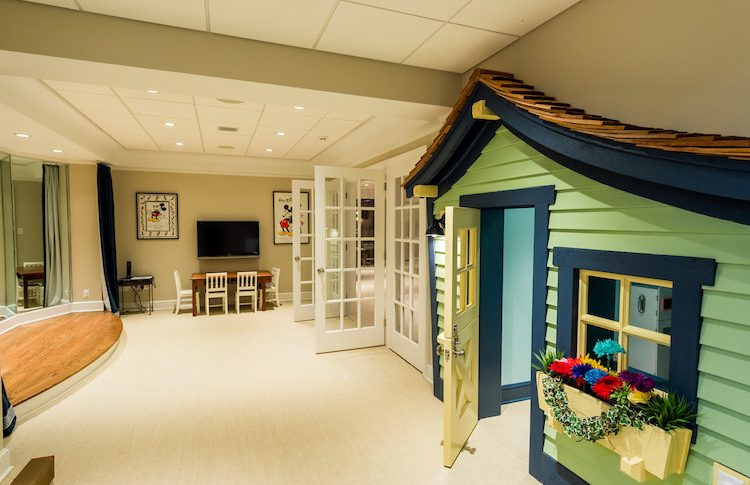Moving to a new house is an exciting but challenging endeavor, especially when you have children. Your new home should not only accommodate your family’s needs but also provide a safe and kid-friendly environment. In this blog, we’ll explore how to find a new house that is perfect for your family, considering the safety, comfort, and well-being of your children as top priorities.
1. Prioritize Safety: A Secure Environment
Safety should be the foremost concern when searching for a kid-friendly house. Look for features such as fenced yards, childproofed electrical outlets, and safe flooring. Check for smoke detectors and fire extinguishers. Familiarize yourself with local crime rates and safety statistics in the neighborhood.
2. Location Matters: Family-Friendly Neighborhoods
The neighborhood plays a significant role in your child’s well-being. Research local schools, parks, and recreational facilities. Talk to neighbors or join local community groups to gain insights into the neighborhood’s atmosphere and sense of community. Low-traffic, residential areas are often ideal for raising children.
3. School Quality: Education Opportunities
Proximity to quality schools is a vital consideration for families. Investigate the reputation and performance of local schools, and ensure they align with your educational goals for your children. Access to good schools can greatly influence your children’s future prospects.
4. Room to Grow: Space for Kids
Children need room to play, explore, and grow. When house hunting, consider the layout and size of the house. Look for homes with spacious bedrooms, a playroom, or a yard where kids can run and play. A house with ample space can accommodate your family’s evolving needs.
5. Childproofing Potential: Easily Adaptable Spaces
Not every house you consider will be perfectly childproofed. Look for homes with adaptable spaces that can be childproofed and tailored to your family’s specific needs. Ensure there are no glaring hazards that would be difficult to address.
6. Walkability and Accessibility: A Safe Environment
A family-friendly house should be in an area that allows for safe outdoor activities. Seek neighborhoods with sidewalks, pedestrian-friendly streets, and nearby parks. Easy access to amenities like grocery stores and healthcare facilities is also important.
7. Check for Hazards: Hidden Dangers
Inspect the house for potential hazards that may not be immediately apparent. This includes lead-based paint, mold, asbestos, and other environmental issues that could affect your child’s health. A professional home inspection can help identify these concerns.
8. Landscaping: Child-Friendly Outdoor Spaces
If the house has a yard, assess the landscaping. Look for safe, well-maintained outdoor spaces. Consider whether there are potential dangers, like steep slopes, ponds, or dense vegetation. An outdoor area should be inviting and child-friendly, with room for play equipment or a garden.
9. Neighborhood Amenities: Playgrounds and Recreational Areas
Check for nearby playgrounds, recreational areas, and community centers. Having access to these amenities can provide your children with opportunities for socialization and physical activity. The presence of child-friendly spaces in the neighborhood can greatly enhance their quality of life.
10. Childcare Options: Close Proximity
If you need childcare, whether it’s daycare, preschool, or afterschool programs, look for houses with proximity to reputable options. Convenience in accessing childcare can make your daily routine more manageable and less stressful.
11. Consider Future Needs: Room to Grow
Think long-term when searching for a child-friendly house. Will your family expand, or will your children’s needs change as they grow? Consider whether the house can adapt to these future requirements. Look for flexible spaces that can be repurposed.
12. Energy Efficiency: Cost-Effective Living
In addition to your children’s well-being, consider the long-term financial aspects of the house. Energy-efficient homes can lead to cost savings, which can be crucial for your family’s financial stability. Look for features like well-insulated windows, energy-efficient appliances, and solar panels.
13. Get Input from Your Kids: Involve Them in the Process
If your children are old enough, involve them in the house-hunting process. Ask for their input and preferences, such as the color of their future bedroom or the activities they’d like to do in the new house. This can help them feel a sense of ownership and excitement about the move.
Finding a new house that is kid-friendly is a comprehensive process that involves considering safety, space, location, and long-term needs. By prioritizing your children’s well-being and involving them in the decision-making process, you can create a safe, comfortable, and nurturing environment that allows your family to thrive in your new home. Your choice of house can greatly influence your children’s upbringing and quality of life, so take your time and make a well-informed decision.



